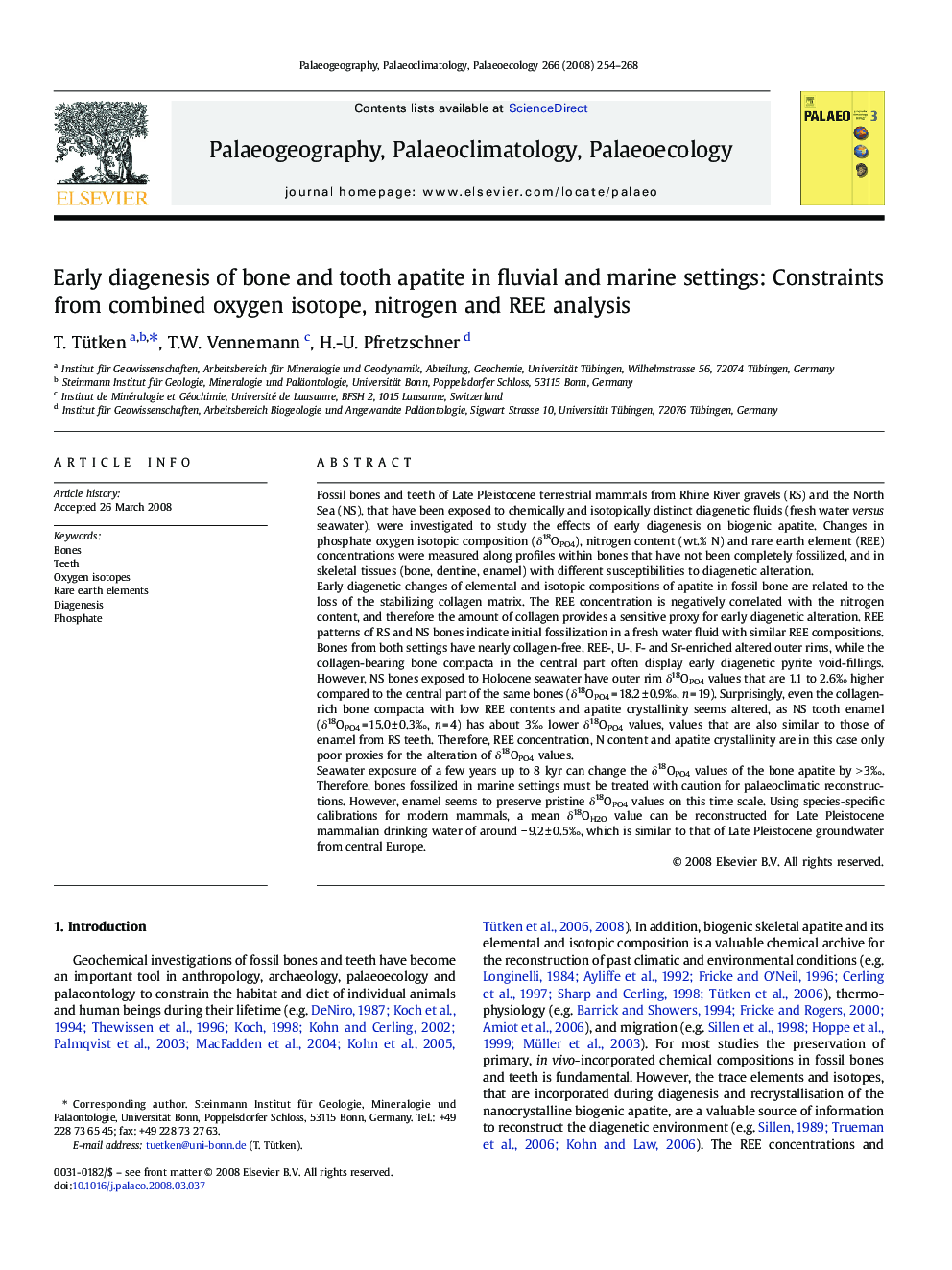| کد مقاله | کد نشریه | سال انتشار | مقاله انگلیسی | نسخه تمام متن |
|---|---|---|---|---|
| 4468452 | 1622321 | 2008 | 15 صفحه PDF | دانلود رایگان |

Fossil bones and teeth of Late Pleistocene terrestrial mammals from Rhine River gravels (RS) and the North Sea (NS), that have been exposed to chemically and isotopically distinct diagenetic fluids (fresh water versus seawater), were investigated to study the effects of early diagenesis on biogenic apatite. Changes in phosphate oxygen isotopic composition (δ18OPO4), nitrogen content (wt.% N) and rare earth element (REE) concentrations were measured along profiles within bones that have not been completely fossilized, and in skeletal tissues (bone, dentine, enamel) with different susceptibilities to diagenetic alteration.Early diagenetic changes of elemental and isotopic compositions of apatite in fossil bone are related to the loss of the stabilizing collagen matrix. The REE concentration is negatively correlated with the nitrogen content, and therefore the amount of collagen provides a sensitive proxy for early diagenetic alteration. REE patterns of RS and NS bones indicate initial fossilization in a fresh water fluid with similar REE compositions. Bones from both settings have nearly collagen-free, REE-, U-, F- and Sr-enriched altered outer rims, while the collagen-bearing bone compacta in the central part often display early diagenetic pyrite void-fillings. However, NS bones exposed to Holocene seawater have outer rim δ18OPO4 values that are 1.1 to 2.6‰ higher compared to the central part of the same bones (δ18OPO4 = 18.2 ± 0.9‰, n = 19). Surprisingly, even the collagen-rich bone compacta with low REE contents and apatite crystallinity seems altered, as NS tooth enamel (δ18OPO4 = 15.0 ± 0.3‰, n = 4) has about 3‰ lower δ18OPO4 values, values that are also similar to those of enamel from RS teeth. Therefore, REE concentration, N content and apatite crystallinity are in this case only poor proxies for the alteration of δ18OPO4 values.Seawater exposure of a few years up to 8 kyr can change the δ18OPO4 values of the bone apatite by > 3‰. Therefore, bones fossilized in marine settings must be treated with caution for palaeoclimatic reconstructions. However, enamel seems to preserve pristine δ18OPO4 values on this time scale. Using species-specific calibrations for modern mammals, a mean δ18OH2O value can be reconstructed for Late Pleistocene mammalian drinking water of around − 9.2 ± 0.5‰, which is similar to that of Late Pleistocene groundwater from central Europe.
Journal: Palaeogeography, Palaeoclimatology, Palaeoecology - Volume 266, Issues 3–4, 5 September 2008, Pages 254–268